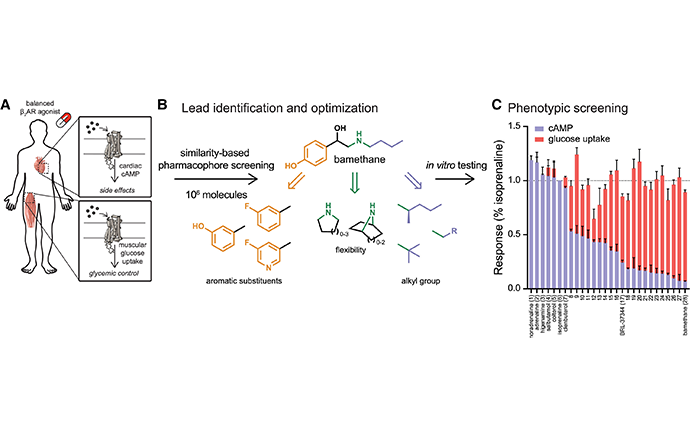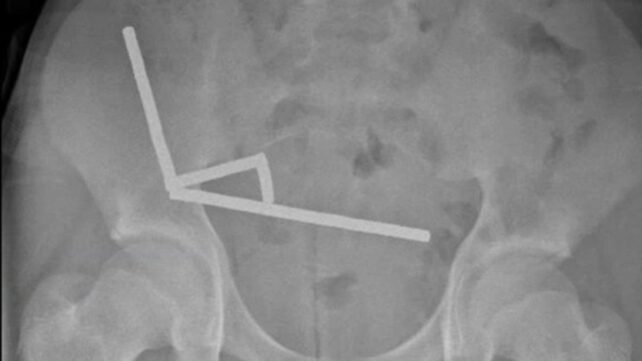A groundbreaking oral medication that treats diabetes and obesity while preserving vital muscle mass has successfully completed early clinical trials. The drug, called ATR-258, works differently from popular weight loss injections by targeting metabolism in skeletal muscles rather than affecting appetite or stomach emptying.
“Our results point to a future where we can improve metabolic health without losing muscle mass,” says Professor Tore Bengtsson from Stockholm University, one of the researchers behind this innovation.
ATR-258, developed by Swedish biotech company Atrogi in collaboration with Monash University scientists, has completed Phase 1 clinical trials. The pill works by mimicking the key benefits of exercise – boosting glucose uptake, increasing insulin sensitivity, and maintaining muscle strength.
Why Muscle Preservation Matters
People with diabetes have a significantly higher risk of developing sarcopenia (age-related muscle loss). Research shows that people with diabetes have three times the risk for sarcopenia compared to those without diabetes. This creates a dangerous cycle, as skeletal muscle plays a crucial role in regulating blood glucose.
Studies have found that 30% to 50% of older patients with type 2 diabetes experience moderate-to-severe muscle loss. The connection is so significant that reduced grip strength can serve as an early indicator of metabolic issues.

How Current Weight Loss Drugs Work
Popular medications like Ozempic and Wegovy (semaglutide) work as GLP-1 receptor agonists. These drugs mimic a hormone produced in the gut that helps control blood sugar and appetite. They work by:
- Slowing stomach emptying so you feel full longer
- Reducing appetite signals in the brain
- Increasing insulin production when blood sugar rises
- Decreasing glucagon (a hormone that raises blood sugar)
While highly effective for weight loss and blood sugar control, some research has raised questions about potential effects on muscle mass during significant weight loss, though findings vary.
A Different Approach: Targeting Muscle Metabolism
ATR-258 takes a completely different approach by targeting the Beta-2 adrenergic receptor (β2-AR) in muscle cells. This receptor plays a critical role in regulating glucose uptake in skeletal muscle.
What makes ATR-258 special is its precise mechanism called “pathway-selective agonism.” The drug activates only specific pathways within muscle cells that promote glucose uptake while avoiding pathways that cause side effects.
“What we were looking for is drug candidates that weakly activate β2-AR and, importantly, have a preference for interacting with GRKs to improve uptake into muscle,” explains Professor Roger Summers from Monash University. This selective activation is key to promoting muscle health without causing cardiac, muscular, or gastrointestinal issues common with less targeted medications.
Exercise in a Pill
ATR-258 essentially delivers some benefits of exercise in pill form. By improving how muscles absorb and use glucose, it tackles the root problems of diabetes while supporting muscle strength – something many current treatments fail to address.
“ATR-258 represents a next generation of therapeutics for the treatment of metabolic diseases and sarcopenia,” says Dr. Hutchinson.
Patients take the medication once daily as a capsule, making it convenient compared to injectable treatments. The pill’s patient-friendly design could improve treatment adherence, a crucial factor in diabetes management.
Similar Posts
Looking Ahead: Future Testing
According to the research paper, Atrogi plans to advance ATR-258 into two Phase 2 trials. The first, called ATTRACTIVE-3, will assess proof-of-concept in healthy volunteers, while the second, ATTRACTIVE-4, will evaluate the compound as an add-on therapy to GLP-1 agonists in patients with obesity.

This combined approach could potentially offer complementary benefits – leveraging different mechanisms to address multiple aspects of metabolic health.
The development represents a significant step forward in diabetes and obesity treatment, addressing a critical gap in current therapies by focusing on both weight management and muscle preservation. For the millions living with diabetes worldwide, this approach could significantly improve quality of life by tackling multiple aspects of metabolic health with one daily pill.
Frequently Asked Questions
ATR-258 is a new oral pill for diabetes and obesity that works by targeting the Beta-2 adrenergic receptor in muscle cells to improve glucose uptake and metabolism. Unlike Ozempic and similar GLP-1 drugs which work primarily by controlling appetite and slowing stomach emptying, ATR-258 focuses on muscle metabolism. The key difference is that ATR-258 preserves muscle mass during weight loss, while studies show GLP-1 drugs can cause 25-39% of weight loss to come from muscle tissue rather than fat.
Preserving muscle during weight loss is crucial because muscle tissue plays a vital role in regulating blood glucose, maintaining metabolic health, and supporting mobility and independence, especially as we age. Research shows that people with diabetes have three times the risk for accelerated muscle loss compared to those without diabetes. When muscle is lost during weight loss, it can create a dangerous cycle that worsens metabolic health, increases fall risk, and may lead to long-term disability. Maintaining muscle also helps prevent weight regain after treatment.
No, ATR-258 has not yet been approved for public use. It has successfully completed Phase 1 clinical trials, which established its safety and tolerability in humans. The drug is now moving into Phase 2 clinical trials, which will further evaluate its effectiveness and safety in larger patient populations. The development company, Atrogi, is planning two Phase 2 trials: one called ATTRACTIVE-3 to assess proof-of-concept in healthy volunteers, and another called ATTRACTIVE-4 to evaluate it as an add-on therapy to GLP-1 drugs in patients with obesity.
ATR-258 appears to have a different side effect profile than GLP-1 drugs. While GLP-1 medications commonly cause gastrointestinal issues like nausea, vomiting, and constipation, ATR-258 works through a completely different pathway. Its selective targeting of specific Beta-2 adrenergic receptor pathways is designed to avoid the cardiac, muscular, and gastrointestinal side effects that have limited the use of other Beta-2 agonists in the past. However, full safety data will only be available after larger and longer-term clinical trials are completed.
Yes, one of the planned Phase 2 clinical trials (ATTRACTIVE-4) will specifically evaluate ATR-258 as an add-on therapy to GLP-1 drugs in patients with obesity. This combination approach could potentially offer complementary benefits: the appetite control and weight loss effects of GLP-1 medications along with the muscle preservation and metabolic improvements of ATR-258. This could create a more comprehensive treatment approach that addresses multiple aspects of metabolic health simultaneously.
ATR-258 mimics certain metabolic benefits of exercise by activating specific pathways in muscle cells that boost glucose uptake and improve insulin sensitivity. When we exercise, our muscles become more efficient at using glucose for energy, and ATR-258 promotes similar cellular changes. However, it’s important to note that while the drug may replicate some metabolic benefits of exercise, it cannot replace all the comprehensive health benefits of physical activity, including cardiovascular improvements, bone strength, balance, and mental health benefits.

















